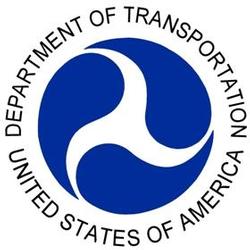
BTS releases November 2014 North American feight numbers
U.S.-NAFTA freight totaled $96.3 billion in November 2014 as two transportation modes – truck and pipeline – carried more U.S.-NAFTA freight than in November 2013, according to the TransBorder Freight Data released today by the U.S. Department of Transportation’s Bureau of Transportation Statistics (BTS). Year-over-year, the value of U.S.-NAFTA freight flows by all modes increased by 0.1 percent. The annual growth in the value of NAFTA trade slowed in November due in part to the reduced value of shipments of mineral fuels and of imported vehicles, parts, and electrical machinery.
Freight by mode
In November 2014 compared to November 2013, the value of commodities moving by truck grew by the largest percentage of any mode, 1.4 percent, followed by pipeline freight which increased by 1.1 percent. Rail freight decreased by 3.0 percent mainly due to reduced value of trade in vehicles and parts, vessel freight decreased by 3.3 percent mainly due to lower mineral fuel prices, and air freight decreased by 7.1 percent due to a decline in trade of precious stones, aircraft parts, and electrical machinery.
Of the $115 million increase in the value of U.S.-NAFTA freight from November 2013, a $787 million increase by truck and a $74 million increase by pipeline offset decreases by the other modes, air, vessel and rail.
Trucks carry three-fifths of U.S.-NAFTA freight and are the most heavily utilized mode for moving goods to and from both U.S.-NAFTA partners. Trucks accounted for $29.9 billion of exports and $28.7 billion of imports.
Rail remained the second largest mode, moving 15.3 percent of all U.S.-NAFTA freight, followed by vessel, 8.7 percent; pipeline, 6.8 percent; and air, 3.7 percent. The surface transportation modes of truck, rail and pipeline carried 83.0 percent of the total U.S.-NAFTA freight flows.
U.S.-Canada Freight
Year-over-year, U.S.-Canada freight moved by vessel was the only mode to show an increase, growing 0.2 percent. Freight moved by pipeline decreased 0.3 percent, and truck 1.5 percent. Rail freight decreased 5.2 percent due to a decline in trade of vehicles and auto parts, electrical machinery, and vegetable oils. Air freight decreased 5.6 percent due to a decline in trade of precious stones, aircraft parts, and electrical machinery.
Trucks carried 55.2 percent of the $52.4 billion of freight to and from Canada, followed by rail, 16.3 percent; pipeline, 11.8 percent; vessel, 5.7 percent and air, 4.5 percent. The surface transportation modes of truck, rail and pipeline carried 83.3 percent of the total U.S.-Canada freight flows.
U.S.-Mexico Freight
Year-over-year, the value of U.S.-Mexico pipeline freight rose 30.4 percent, the largest percentage increase of any mode, due to an increase in the volume of U.S. exports of mineral fuels. Pipeline freight remained 0.9 percent of total U.S.-Mexico freight value. Freight moved by truck increased 4.3 percent while rail rose 0.3 percent. Freight carried by vessel decreased 5.2 percent mainly due to lower mineral fuel prices and air declined 9.9 percent due to a decline in trade of electrical machinery and precious stones.
Trucks carried 67.6 percent of the $43.9 billion of freight to and from Mexico, followed by rail, 14.2 percent; vessel, 12.2 percent; air, 2.8 percent; and pipeline, 0.9 percent. The surface transportation modes of truck, rail and pipeline carried 82.6 percent of the total U.S.-Mexico freight flows.
See BTS Transborder Data Release for summary tables and additional data. See North American Transborder Freight Data on the BTS website for additional data for surface modes since 1995 and all modes since 2004.









